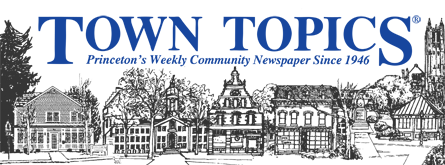Accepted? Rejected? Wait listed? With college letters now in hand, many high school seniors will be making decisions by May 1.
“Ivy Day” was March 30 for many college letters to be sent, and acceptance rates were down from last year at six of eight Ivy League colleges. Princeton University accepted just 6.1 percent of its record 31,056 applicants for next fall’s freshman class, down from 6.46 percent last year. Princeton has offered admission to 1,890 students, 770 in December through early action, with 1,308 expected to matriculate in the class of 2021. Among the Ivies, only Harvard at 5.2 percent and Columbia at 5.8 percent had lower acceptance rates.
Despite the increasing competition for admission to the most selective schools, Princeton High School (PHS) guidance counselor Patti Lieberman noted, “We’re finding the usual number getting into the most competitive schools.” But, she added, “There are more students applying, and there are strong students who have been wait-listed rather than accepted.”
Emphasizing the importance of factors other than the prestige of the particular college, Ms. Lieberman said, “Some students are disappointed, but they don’t realize how amazing their options are. They’ll figure that out in about a week.”
She continued, “My message to these students would be: ‘The name of the college does not define your success. You will determine that.’ Sometimes they need to stop and consider that. Often students who were initially disappointed will come back in the fall and tell me how wonderful their college is.”
Ms. Lieberman observed, however, that despite the recent emphasis, at PHS and elsewhere, on “turning back the tide” of overly competitive college admissions, “there are still students who are going for just that group of schools with single-digit acceptance numbers.”
From the classes of 2012 to 2015, 67 PHS graduates attended Princeton University.
Lawrenceville School College Counseling Director Jeffrey Durso-Finley also declined to discuss specific numbers at particular universities, but he emphasized, “Applying to college is as selective and complex as it’s ever been in my 25 years on both sides of the desk.”
He noted the increasing competitiveness among colleges. “The hyper-selective schools (Princeton, Yale, Stanford, etc.) continue their ‘arms race’ to see who can be the most selective,” he said. “Somehow it’s gotten into the higher education consciousness that the lower your admit rate, then somehow the better the institution you are. And although that’s not a particularly new phenomenon, it feels amplified in the last few years.”
The effects of this competitiveness are felt among the less-selective colleges “who want to ‘join the club,’” according to Mr. Durso-Finley, “and are enacting specific admissions policies to boost their matriculation rate, lower their acceptance rate, and maneuver their statistics to shift within college rankings.” He also mentioned that “early admissions plans” are now primary admission tools instead of a way for students to indicate a primary preference or for a college to simply have an advanced deadline. They are now a “powerful enrollment management tool” with some universities “over-admitting” in early admissions and leaving few spaces in regular action.
At Stuart Country Day School of the Sacred Heart, the 37 seniors were admitted to nearly 100 colleges and universities including Georgetown, Stanford, Columbia, Brown, and Princeton, according to College Counselor Robyn Henry. Business programs were particularly popular among Stuart applicants this year, with students admitted to business schools at Boston College, Fordham, University of Michigan, University of Pennsylvania, and Villanova.
The applicant pool at Princeton University has more than doubled over the past 14 years, with this year’s the largest in the University’s history.
Of the students offered admission, 50.5 percent are women, 49.5 percent men; 53.4 percent are people of color, including biracial and multiracial; 63.8 percent are from public schools; and 18.9 percent will be the first in their families to attend college.
“We believe this year represents the largest number of first-generation college students admitted to Princeton in the modern era,” Dean of Admission Janet Lavin Rapelye said. “This reflects the University’s ongoing commitment to increase the socioeconomic diversity of undergraduates, including those from first-generation and low-income backgrounds.”
The University’s financial aid program provides support to make sure that tuition is affordable for every admitted student, with sixty percent of this year’s freshman class receiving aid and the average grant at $48,000 per year. No student at Princeton is required to take out a loan.
The applicant pool included students from 10,274 high schools from 151 countries, with 12,435 of the applicants registering a 4.0 average.
Of those accepted 10.7 percent were children of Princeton alumni, and 24.1 percent indicated they wanted to study engineering.
In addition to the 1,890 accepted, 1,168 were were offered positions on the wait list. Up to 35 accepted students are expected to defer their enrollment for a year to participate in Princeton’s Bridge Year Program.
